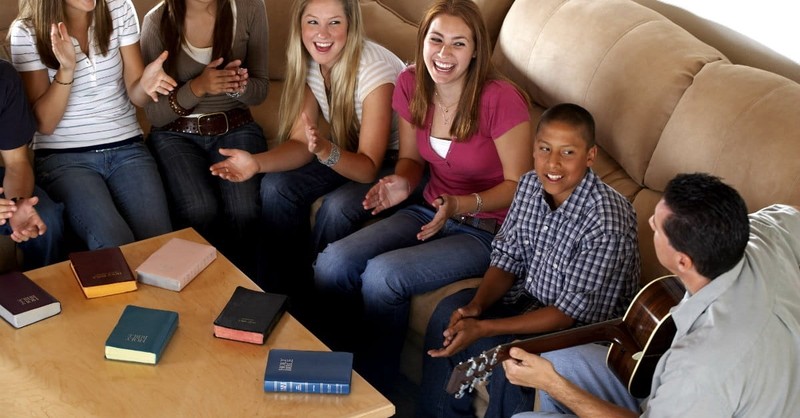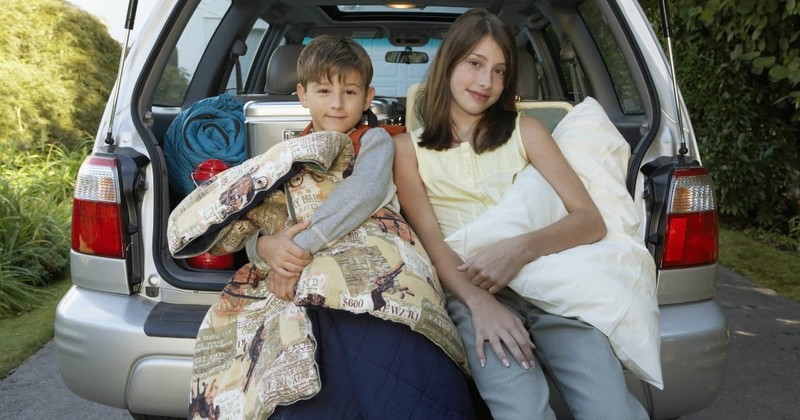
Over the past several months, stories of sexual misconduct within the church have permeated the news and social media. Even over the holidays, another incident involving a well-known pastor made headlines. Considering the prevalence of this topic, it’s more important than ever that the leaders and lay people in the church understand exactly how to protect against child abuse, and what should be done if abuse is reported. Whether you’re a leader in your church community or a layperson, you have a voice and a role to play in keeping this criminal behavior from hurting the flock.
Here are some ideas to consider helping protect your church from child abuse.

1. Recognize the Problem
A recent article by Religion News Service cites several studies regarding the prevalence of pedophilia within our culture as well as in our churches. Clinical Psychologist Anna Salter notes the trusting nature of the faith community as being one of the reasons why predators target churches. As a church, we can no longer hide our heads in the sand. We must protect and respond.
Crosswalk.com contributors Kimberlee D. Norris and Gregory S. Love have this to say about the necessity of the church coming to grips with the pervasive nature of abuse in the church:
“In general, Church members naively believe that their church is a safe environment for children and youth, laboring under the misconception: “it won't happen here.” Unfortunately, child sexual abuse has infiltrated every possible activity, organization or area once thought to be danger-free, kid-tested or mother-approved – including Christian ministries.
Conservative studies indicate one out of four girls and one of six boys will be sexually abused before reaching 18 years of age, regardless of religious or socio-economic demographic. The epidemic is truly widespread, and ministries are regularly caught in the aftermath.”
Image Credit: Thinkstock.com

2. Train the Staff and Leadership about Child Abuse
Many churches train their leadership in Pediatric First Aid, but rarely does a church have a relationship with a local Child Protection Service worker. Incorporating elements of training in a yearly staff retreat for leadership would help reduce the risk of abuse.
If you’re looking for training resources, Boz Tchividjian’s organization GRACE (Godly Response to Abuse in the Christian Environment) has a resource page to help you get started.
One of the most important things staff and parents need to be educated on is what kind of child is at risk for abuse. According to GRACE, predators seek vulnerable children – those who are mentally disabled, children engaging in delinquent behavior, children of single parents and children engaging in drug or alcohol use.
Image Credit: Thinkstock.com

3. Properly Screen ALL Children’s and Youth Workers
Recruiting for children’s and youth ministry can sometimes be an arduous task. However, the safety of the children must be the priority. Before allowing a volunteer access to a child, the person should be interviewed and background checked. While a background check will not guard against all cases of abuse, it is a first line of defense. If your church does not already background check all workers on a regular basis, this is a must-do for the protection of the children within your church.
As a layperson, you have the right to ask your church leaders whether background checks are required for workers, and to insist that they do. Parents should also seriously consider whether this is a “leave the church” issue if the local congregation is unwilling to do background checks on those watching after their children.
Image Credit: Thinkstock.com

4. Have an Updated Policy and Procedures Manual that is Accessible and Enforced.
United Methodist Church developed Safe Sanctuaries, a resolution and training initiative to reduce sexual misconduct within the church.
Every member and visitor should be able to easily find your church’s policies for screenings and other policies and procedures that you have in place to keep your children safe. For churches today, that place is usually on the church website. If your church doesn’t have a website, printed materials should be available and distributed to all members and regular attenders.
Image Credit: Thinkstock.com

5. Be Intentional in Creating a Child-Safe Environment.
Most churches are strategic in curriculum, décor, and physical safety features of a children’s environment. In striving to prevent abuse, the space should be evaluated with a different lens. For instance, the environment should maintain a sense of accountability for the protection of both the adults and the children. Always have two adults in a well-visible room. The space should also be easy to monitor at all times. Survey the room and see if there are spaces where children could hide from adults.
Image Credit: Thinkstock.com

6. Think Proactively in Responding to Abuse.
While prevention is necessary, it is naïve to think that abuse will never occur and that it only occurs at church. According to one study, in a church of 200 members, it is estimated that 41 will have survived some sort of sexual abuse. Therefore, churches should be proactive in developing how to care for survivors of abuse and think through a scenario to come up with how the church should respond if abuse happens within the congregation. The response should include finding out what the state requires about mandatory reporting.
Remember, child abuse is a criminal activity, not simply a sin that needs to be forgiven. When criminal behavior occurs, law enforcement and other outside professionals must be made aware of the situation. It is never okay to handle child abuse situations without reporting the crime to the proper authorities.
Image Credit: Thinkstock.com/SinanAyhan

7. Empower Parents to Communicate with Their Children
No one wants to think that sexual misconduct can happen to members their family, much less discuss the possibility. Helping parents and guardians develop a vocabulary and script for opening communication with their children. Part of this training includes encouraging parents to talk openly to their children and teach their children that speaking up about abuse is the right choice and that their parents or guardians will support them. Telling a child to not take candy from a stranger only goes so far in preventing sexual assault. Teaching parents the importance of these difficult conversations and that the church supports them is crucial.
In our Internet-run world, parents also need training and resources to help them protect their children against online predators – youth leaders and children’s ministry leaders should make an effort to come alongside parents and help them learn the best ways to keep their kids safe online.
Image Credit: Thinkstock.com

8. Strive to Create a Culture of Protection
Here are several questions to ask to decide whether your church creates a culture of protection for your children. Does your church have a check-in system that your volunteers, parents, and first-time visitors understand with little explanation? Do the volunteers know the plan of how to contact the parents in case of emergency? Is there a posted fire escape plan in the children’s area and do the volunteers know what to do? Are non-volunteers allowed access to the children once they are in the ministry area? These are just a few questions to help you begin to evaluate how your church is doing in being intentional about the safety of the children in whom are under your care.
Image Credit: Thinkstock.com

9. Enforce Youth Staff to Be Above Reproach.
If a youth worker is never alone with a member of the opposite sex, the likelihood of abuse drops dramatically. While it is necessary to council members of the other gender, it is possible to do so in an environment that is not solitary. There are also ways to share ministry responsibilities with lay leaders. For instance, instead of having a male youth minister drive a female student home from Bible study, he can ask a female volunteer to give a 14-year-old girl a ride home. This not only shows his integrity, but it also gives the volunteer an opportunity to build the relationship with the student and the student’s family.
Image Credit: Thinkstock.com

10. Evaluate Overnight Events
Before planning overnight events, develop a strategy for risk-management regarding how the children are going to bunk and how they will be supervised. Churches have different policies regarding sleeping situations. Whether this is a children’s or youth event, it is important that the parents are well-informed as to who the chaperones are and what the sleeping arrangements are. If your child is attending an overnight event and you do not have answers to these questions, you have the right to know these answers.
This list is not meant to be exhaustive. Above all, we as the Body of Christ should pray for our leadership, our volunteers, and our children who enter the church building. Pray for their protection, but also, pray that they may receive the message that they are loved beyond all measure by their Creator God and were made in His image for a relationship with Him.
-----
Cortney Whiting is a wife and mother of two wonderfully energetic children. She received her Masters of Theology Degree from Dallas Theological Seminary. After serving in the church for nearly 15 years, Cortney currently serves as a lay-leader and writes for various Christian ministries. You can find her at www.unveilinggraces.blogspot.